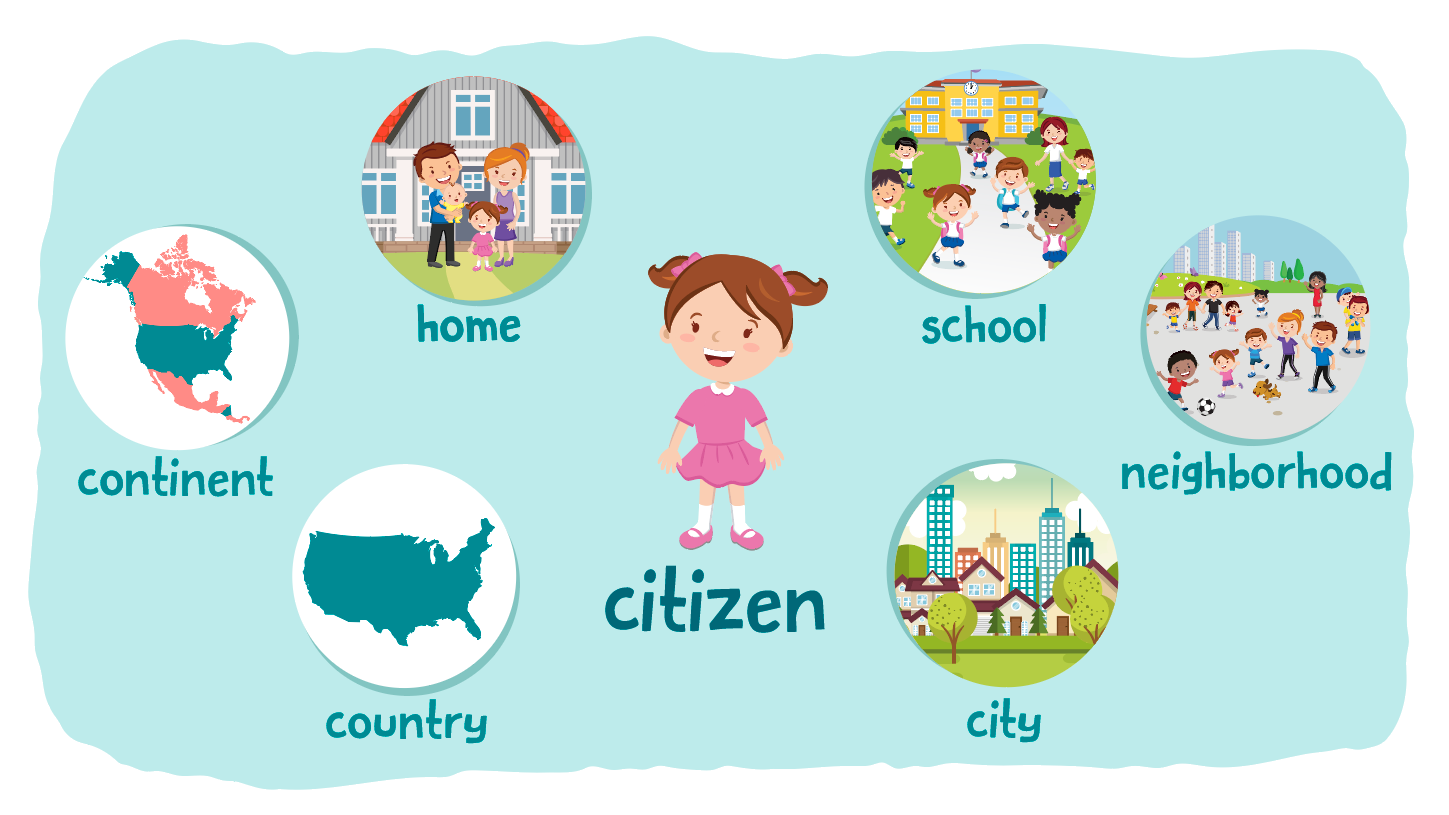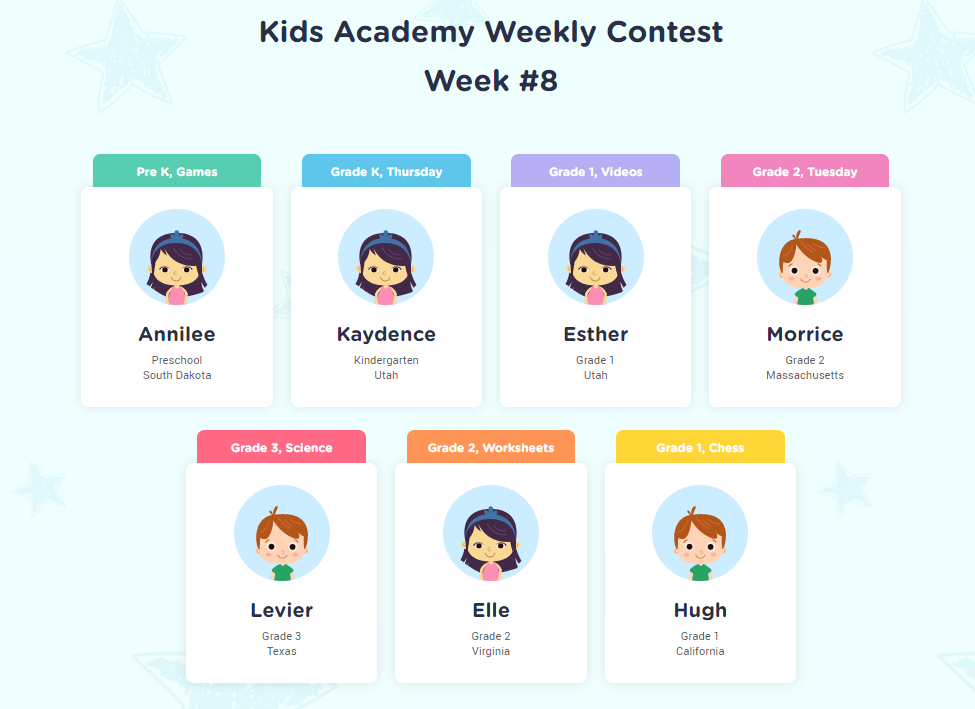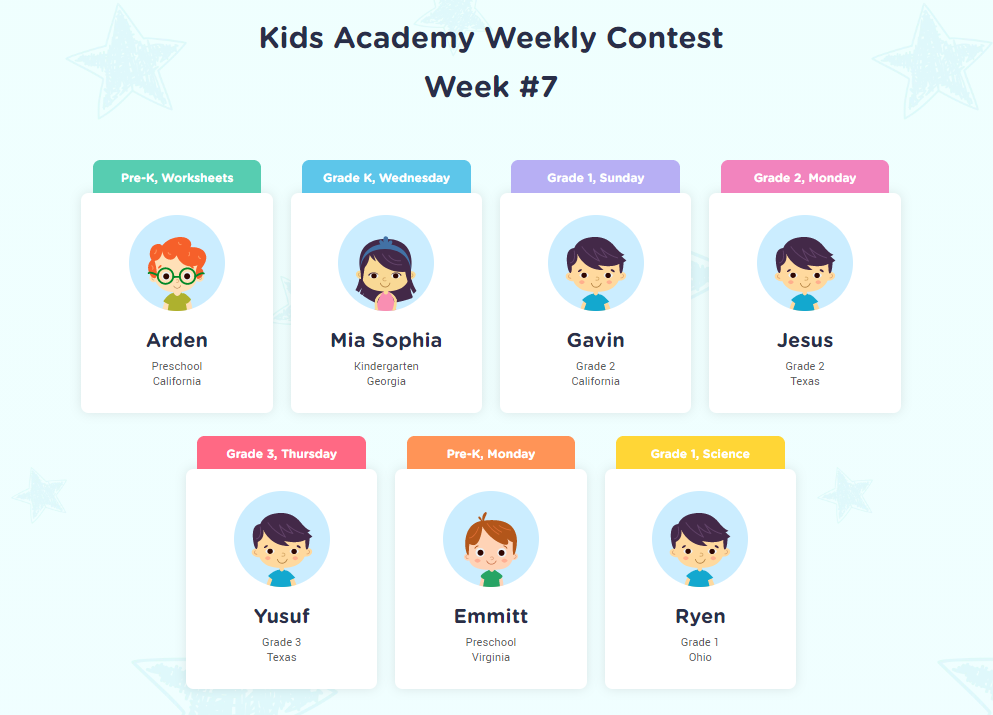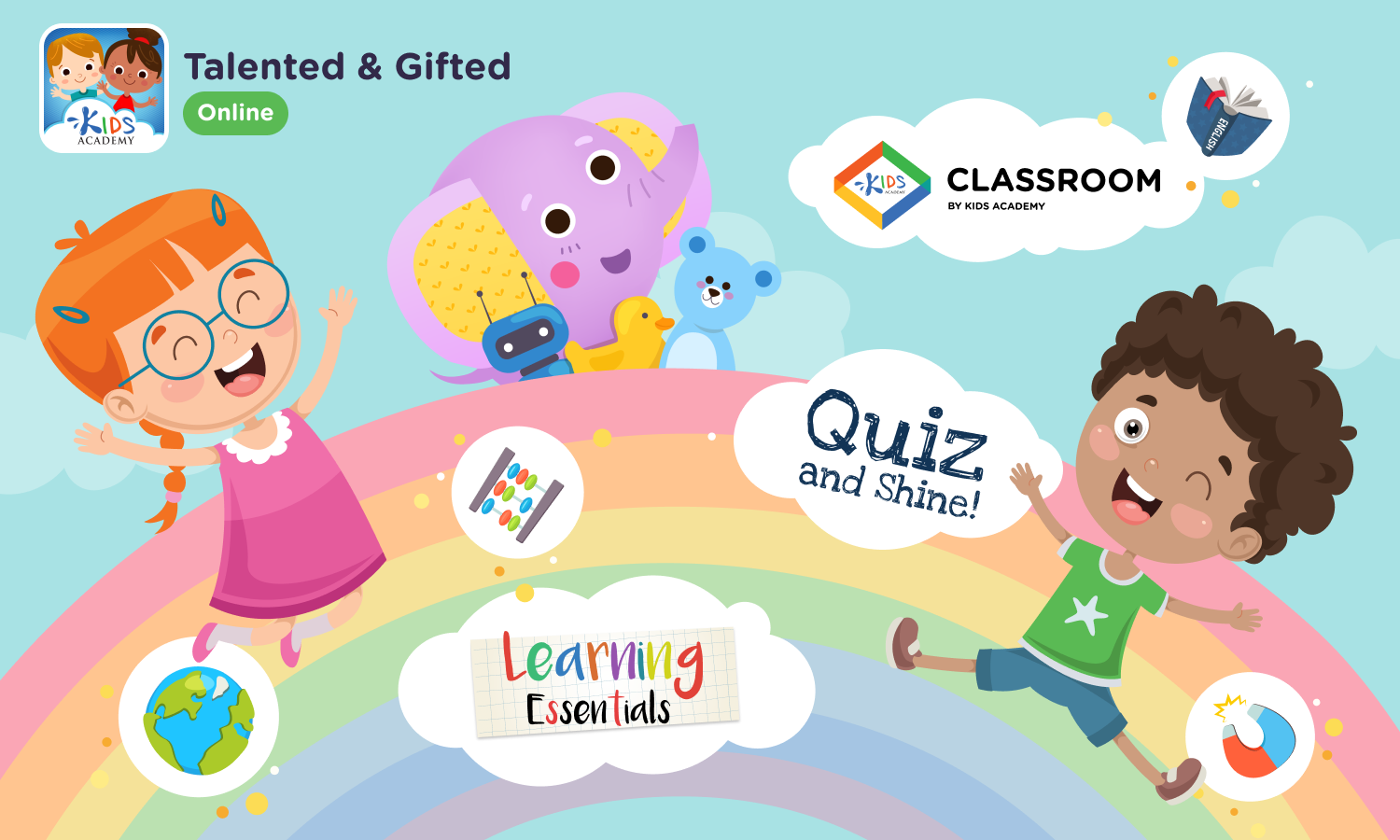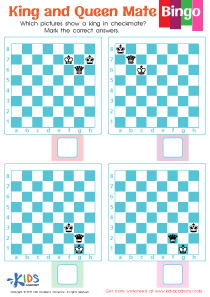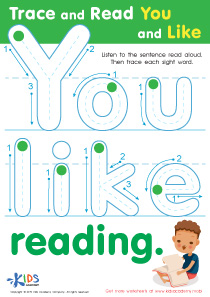Strategic thinking development Normal Grade 1 Chess Worksheets
7 filtered results
-
From - To
Enhance your child's strategic thinking with our Grade 1 Chess Worksheets! Designed to introduce young learners to the fundamentals of chess, these worksheets focus on developing key skills such as planning, analysis, and critical thinking. Each worksheet presents engaging activities that make learning chess fun and accessible. Perfect for beginners, our chess exercises help first graders grasp essential concepts in a simple yet effective manner, boosting their cognitive abilities and problem-solving skills. Set your child on the path to becoming a strategic thinker with our expertly crafted chess worksheets today! Discover the joy of learning through chess at Kids Academy.
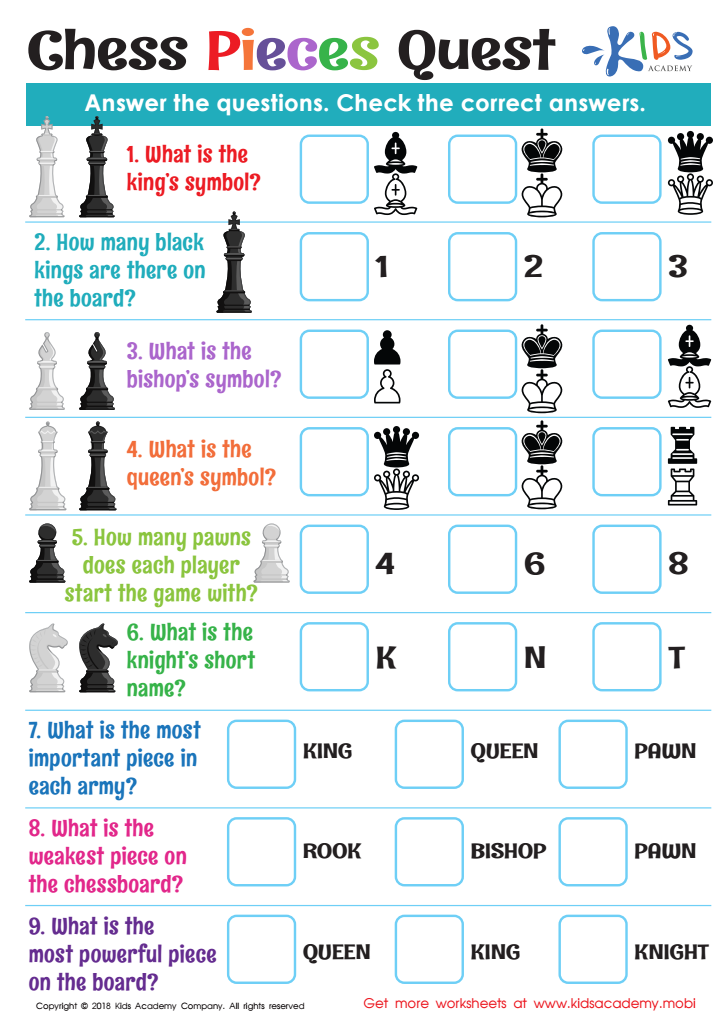

Chess Pieces Quest Worksheet


Notation of Moves Writing it Down Worksheet
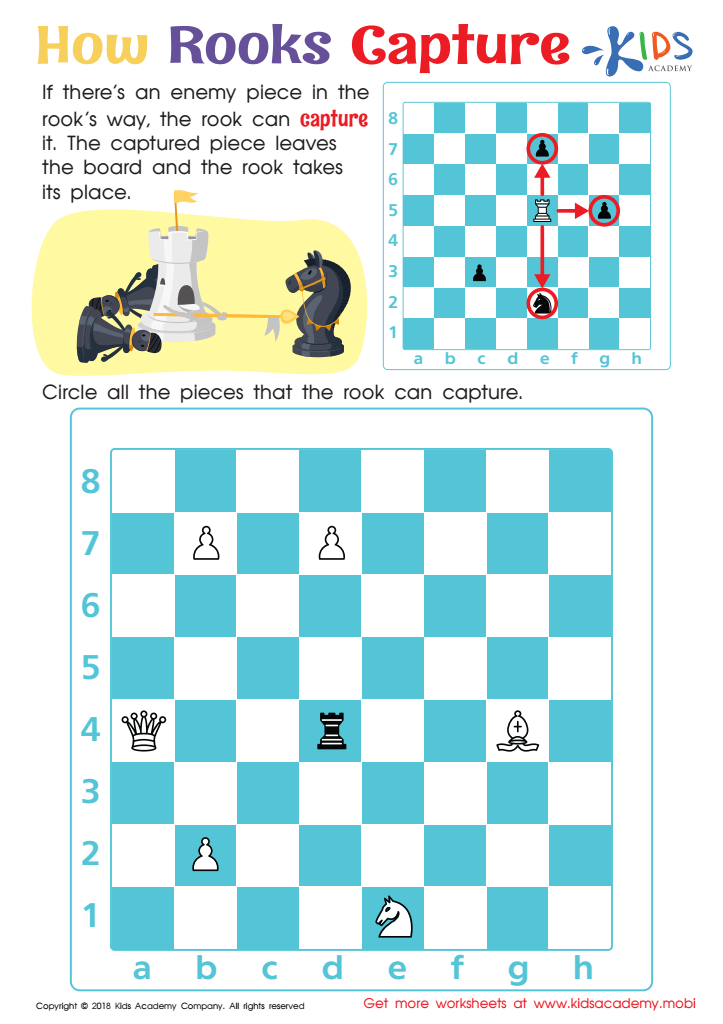

How Rooks Capture Worksheet
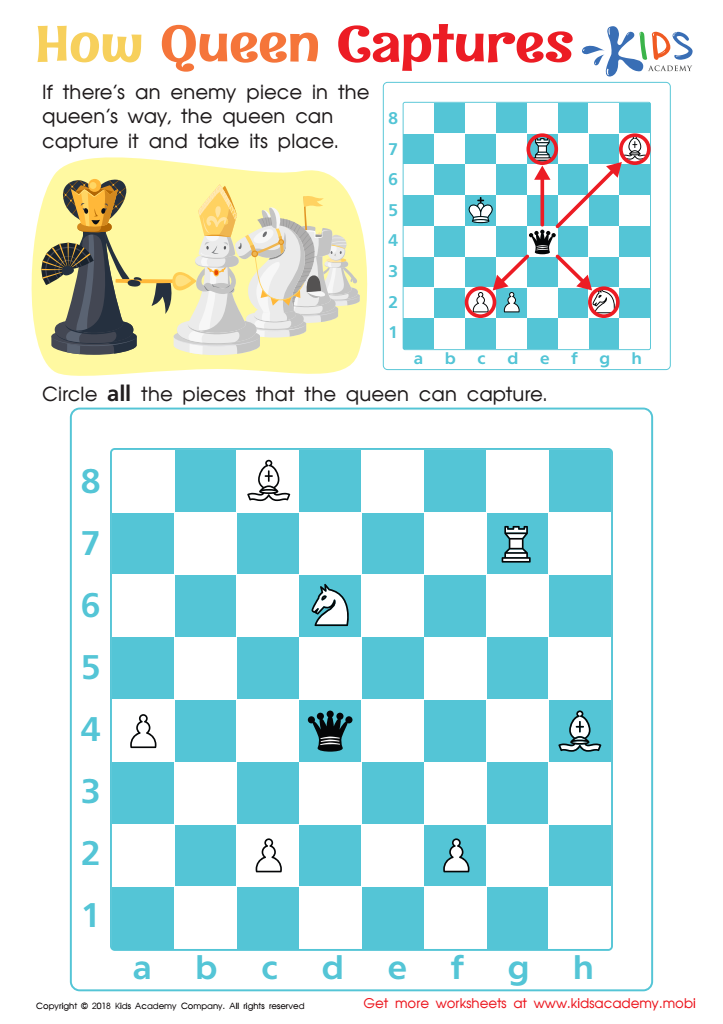

How Queen Captures Worksheet
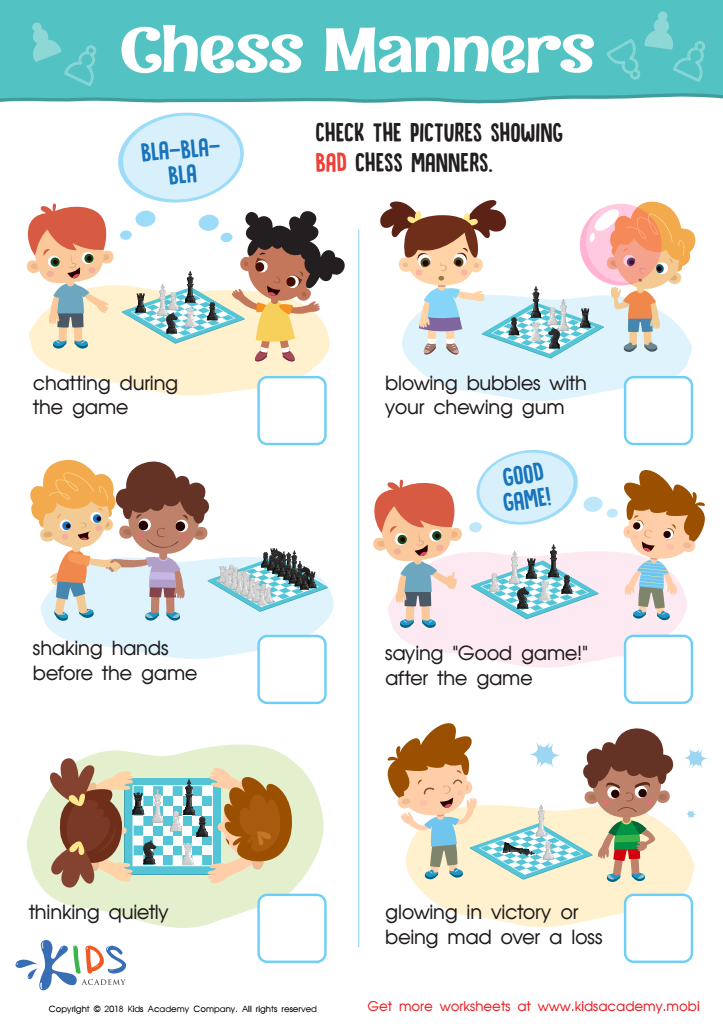

Chess Manners Worksheet
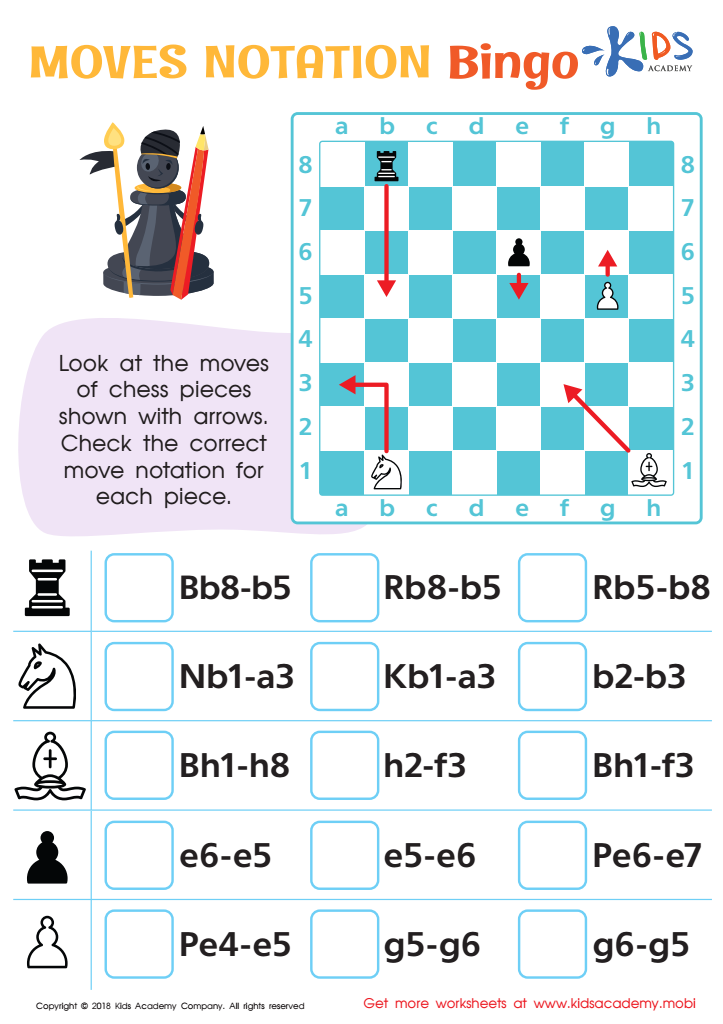

Moves Notation Bingo Worksheet
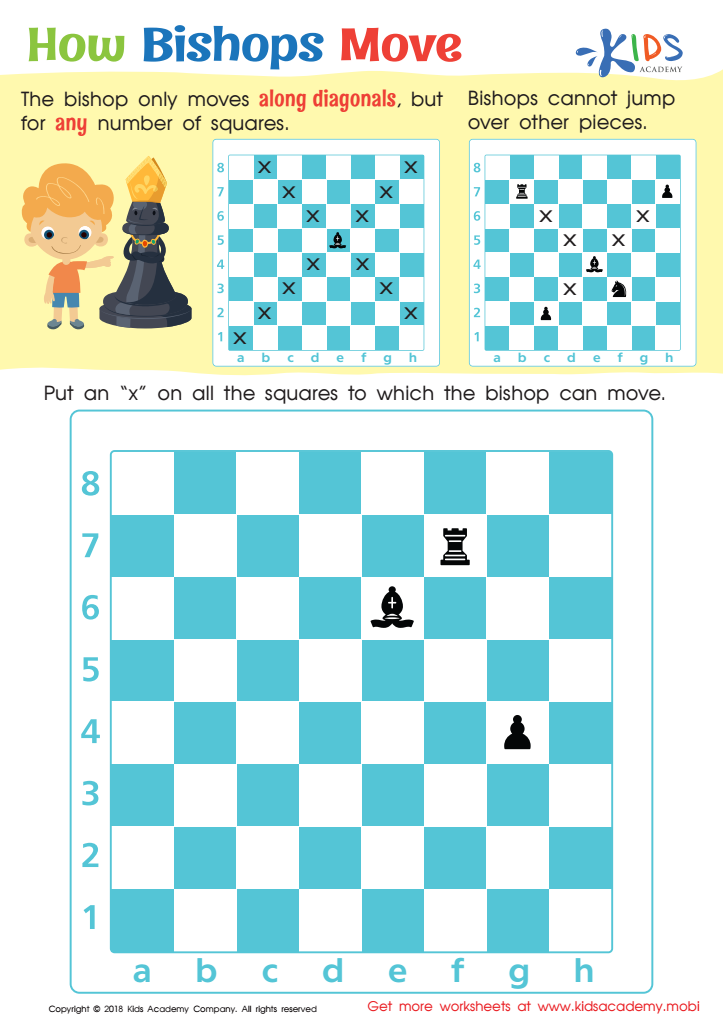

How Bishops Move Worksheet
Strategic thinking development is a critical skill for young learners as it promotes cognitive growth, problem-solving, and decision-making capabilities. Introducing Grade 1 students to chess, an intellectually stimulating game, instills these skills effectively. Children at this age are highly receptive to new concepts, and through chess, they learn to foresee consequences, plan several moves ahead, and adapt to changing situations.
For parents and teachers, fostering these abilities in children is essential as it prepares them for real-life challenges. Strategic thinking enhances academic performance by improving concentration, memory retention, and analytical skills. Chess, specifically, teaches children patience, discipline, and the value of systematic thinking. These attributes contribute significantly to academic subjects such as mathematics, science, and even reading comprehension.
Additionally, chess promotes social skills by encouraging respectful competition, turn-taking, and sportsmanship. Early exposure to strategic thinking through chess helps children develop resilience and emotional intelligence as they learn to handle both victories and setbacks gracefully.
Overall, parents and teachers who prioritize strategic thinking enrich a child's intellectual and social development. Given the lifelong benefits, incorporating chess into a Grade 1 curriculum is a strategic move itself, laying a robust foundation for future learning and personal growth.
 Assign to My Students
Assign to My Students



